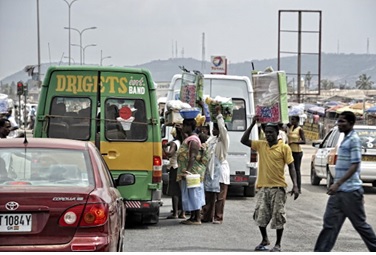African cities aren’t welcoming places for pedestrians. Yet walking is free and, given the shortage of decent public transport, it’s often the only way for people to move around. More than 70% of Africa’s urban population of about 609 million walk daily to their various destinations.

As researchers who study urban development, we are always looking for insights that planners and city authorities can use to make African and global south cities socially equitable, sustainable and resilient.
In a recent paper we reviewed some of Ghana’s urban planning and transport policies, exploring the extent to which policy makers and city authorities planned for and implemented interventions that addressed the needs of walkers. We then contrasted what we found with the walking experiences of residents of two low-income settlements in Accra.
Over three-quarters (75.3%) of the national population make up to ten daily trips to places such as schools, market places and churches on foot. A similar trend was found in our study, where more than two thirds make daily trips on foot.
While Ghana has several transport and local development planning policies, our findings suggest serious gaps between policies and reality. They provide insights into why cities in Africa face persistent difficulties in connecting development initiatives to the pressing needs of the urban poor.
Our results show that policies and municipal plans give little attention to how walking can be made a pleasant experience. We also found that policies and plans didn’t match residents’ actual experiences of walking.
We recommend that city planners work with residents to come up with solutions for making urban neighbourhoods walkable. An example of this comes from Freetown in Sierra Leone, where development planners, academics and residents came together to produce a walking database to inform the planning of changes to the city.
Walkability in Africa’s urban transport policies
Some African cities have included strategies for walking in their transport policies.
For instance, in Lagos (Nigeria), the Lagos Metropolitan Area Transport Authority developed a policy to increase walking by creating a safe and pleasant network of footpaths, greenways and other facilities. In Addis Ababa (Ethiopia), a similar policy was developed. Its aim was to encourage people to walk and to improve connectivity to public transport.
Nairobi (Kenya) has a similar policy to improve the walking environment. It has classified all roads and streets in the city to assess the desirability for walking. The policy also prioritises pedestrians over private cars and trucks in some areas, for example by restricting car use.
All these policies are commendable. But putting them into practice has been hampered by challenges such as funding, public perception and technical capacity.
Against this backdrop, the Accra study analysed how the provisions in national transport policies and local development plans aligned with residents’ lived experiences to co-produce knowledge to prevent such challenges.
Source: The Conservation


